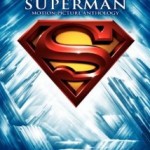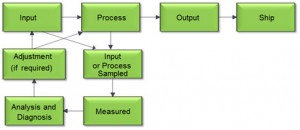Sharing While Studying
Posted on May 31, 2012
Filed Under Communication, Technology, The Writing Life | 2 Comments
We’re in the technical writing business ourselves, but we believe in taking a community approach to the craft. (Hence this blog as a modest offering.) We can learn from each other and the abundant resources available on the Web. How abundant? Well, take a look at Technical Writing Toolbox, which is a blog on technical writing, but a kind of writer’s “resource central,” too. We’re on the Resources tab with the link here.
Blogs, social networks, an online library, LinkedIn groups and Twitter hastags – all for technical writers. Gurpreet Singh, formally of New Delhi, India, and now a full-time student in technical communication in Toronto, Canada, provides these resources, and we’re grateful to him.
 “I love writing. Period.” Gurpreet tells us. “There is nothing else in the world that attracts me more than the magnetism of words.” Well, it’s one thing to love writing, most of us in the technical writing field do. But few of us are inclined to share as freely as Gurpreet has while attending classes as well. (Even if his classes develop the information he’s sharing.)
“I love writing. Period.” Gurpreet tells us. “There is nothing else in the world that attracts me more than the magnetism of words.” Well, it’s one thing to love writing, most of us in the technical writing field do. But few of us are inclined to share as freely as Gurpreet has while attending classes as well. (Even if his classes develop the information he’s sharing.)
This is the kind of fraternity that the Internet encourages, and it’s awesome, and humbling, to see it in practice. Thanks again, man! – Doug Bedell
Distinctions Matter, Technically Speaking
Posted on May 28, 2012
Filed Under Communication, Technology | Leave a Comment
Bart Leahy seems almost embarrassed to be making the sort of distinctions about the levels of technical writing that he’s discussing on his Heroic Technical Writing blog from Huntsville, Alabama. He needn’t be; he’s right on.
 There’s documentation, and there’s “strategic” writing. Technical writers can do both, but they need to be clear about which they’re engaged in on a given project. Usually, that’s not a problem.
There’s documentation, and there’s “strategic” writing. Technical writers can do both, but they need to be clear about which they’re engaged in on a given project. Usually, that’s not a problem.
“Documentation” explains how things work; “strategic” writing explains why they exist, to what end. Bart most enjoys the strategic dimension of the technical writing craft.
“Does this sound like blah-blah-blah or business doublespeak?” he wonders. “I apologize. It’s a little philosophical, what I do, and I’ve just more or less taken it for granted. Let’s say the program manager is going out to talk to a group of companies that would do the work you’re trying to do. They are going to want to know things like what are the financial opportunities they might explore in the program? What are the deadlines for submitting proposals to do new work? What sort of progress is the program making? How many workers might your organization need for future work? These are the sorts of statistics (technical information) that your audience wants. Read more
Students Made a Lubbock Report More Readable
Posted on March 27, 2012
Filed Under Communication, Government, Technology | Leave a Comment
You’ve got to applaud the graduate students at Texas Tech University who redesigned the City of Lubbock’s annual water report and made it more attractively readable. And you’ve got to wonder why more governmental agencies don’t turn to their local colleges and universities for help on the editorial front.
There are all those students, primed with the latest typographical techniques and many/some of them able to write decent prose. What a help they could be to the busy bureaucrats who may be turning out look-alike redos of last year’s more casually produced reports.
Harrison Ownbey, one of the Texas Tech grad students who helped out in Lubbock, said their biggest concern was that the water report be not only readable, but in compliance with federal and state guidelines. What did the city’s residents want most to know about its water? That it was safe to drink. So the “kids” in the technical writing program spread that right across the top of the front page: “Summary – all contaminants measured within this report were compliant with EPA guidelines.”
Read more
Matinee Movies on Our Desktop Screens
Posted on February 20, 2012
Filed Under Communication, Technology | Leave a Comment
Recently, I took our grandson to a special Saturday morning showing of an early John Wayne western movie featuring Gabby Hayes. The film, as it happened, was 68 years old and the sound had deteriorated, making a complicated plot difficult to follow. (But my grandson loved Gabby Hayes, who played a stage coach driver.)
Duncan and I, it turns out, could have stayed home and watched a vintage movie on my desktop computer screen with possibly greater impact. I say possibly, because my home office isn’t a movie theater. Even so, this full-length Superman movie that I’ve stumbled upon on YouTube is pretty gripping, partly because of its flawless sound. Yes, a Superman movie from 1951 plays better at home than the 1943 John Wayne epic did in the theater.
 That, it seems to me, says a good deal about the Internet and the stand-in world it’s been creating for us. You can be seduced into spending increasing amounts of time on the web, and not only on social media. It’s all out there – movies, lectures, concerts and e-mail besides. Two years ago, Google-owned YouTube passed two billion video views per day. And there are now more than 24 hours of video uploaded every minute to the site.
That, it seems to me, says a good deal about the Internet and the stand-in world it’s been creating for us. You can be seduced into spending increasing amounts of time on the web, and not only on social media. It’s all out there – movies, lectures, concerts and e-mail besides. Two years ago, Google-owned YouTube passed two billion video views per day. And there are now more than 24 hours of video uploaded every minute to the site.
It’s a little scary to realize that “alternative reality” can be embodied in your computer. Superman quelled the Mole Men from underground in the movie, but can we resist our own fascination when technology delivers past, or present, delights so reliably on desktop, or even laptop, screens? We’d best be alert to how alternative reality has been creeping up on us, and leave time for the real world to keep moving us ahead. – Doug Bedell
Quality Principles As Living Ideals
Posted on February 13, 2012
Filed Under Business, Communication, Government, Technology | Leave a Comment
Question: We have such great tools to make things better, so why do we feel in such a funk? A dismal question like this can apply on any given day to the state of our nation or our workplace, if we’re fortunate enough to have one.
Steven Ouellette is a quality manager and process engineer who is also an incurable optimist. He addresses our dire question of the day with methodology to produce a more upbeat answer than we ourselves may have at hand.
“I’m no self-help guru,” Ouellete writes in a Quality Digest column, “just a process engineer. But I do think we need to change something about our collective software. We live in an age of man-made miracles that would have astounded even our recent ancestors. Yet, as the great modern philosopher Louis C.K. says, “Everything is amazing, and nobody’s happy.”
So what do we do, rebuild the factory? No, make it work better and more reliably, by using proven methods, not raucous rhetoric.
 There’s still a big role for the quality movement and the methods it uses to produce noteworthy results. Like, Ouellette advises, measuring inputs to forestall worrying about outputs. That’s the latest iteration in a journey that began with the work of W. Edwards Deming, Joseph Juran and Arnold Feigenbaum in Japan in the 1980s.
There’s still a big role for the quality movement and the methods it uses to produce noteworthy results. Like, Ouellette advises, measuring inputs to forestall worrying about outputs. That’s the latest iteration in a journey that began with the work of W. Edwards Deming, Joseph Juran and Arnold Feigenbaum in Japan in the 1980s.
Read more
Clarity Produces a Rush, Whether It Survives Or Not
Posted on February 7, 2012
Filed Under Communication, Technology, The Writing Life | Leave a Comment
Here’s a lady who understands a prime component of good technical writing, or any writing, for that matter:
“What all the (technical writing) disciplines share in common is a need for the writer to communicate effectively within the perspective of user need from the document, and to have a strong awareness of good ways to enhance the message through visuals and good use of white space.”
The sentence, by Christine Lebednik on the Street Articles site, is a trifle awkward in terms of what a user needs from the document he or she is reading, but it gets to the two essentials of good technical writing: tight, clear expression of why the document exists (a means to a given, safe end), and ways to enhance it with illustrations and white space.
Christine isn’t in technical writing any longer. When she was, though (prior to the bursting of the IT bubble in 2001-02), she was most familiar with the fields of aviation, medical and pharmaceutical writing.
Our colleague, Dennis Owen, notes that there are many other settings in need of good technical writing. Start by looking around your house, or out the window: “IKEA furniture? Someone had to write the assembly instructions. Component stereo or flat screen TV? Someone had to create the connection and installation diagrams. Smart thermostat? Hell, mine has an entire booklet (and it’s still hard to program). Car? The owner’s manual is a serious example of technical writing. On and on…”
Read more
Expect to be Writing and Diagramming on Tablets
Posted on January 26, 2012
Filed Under Business, Communication, Technology, The Writing Life | Leave a Comment
Apple’s education event in New York City this month had striking implications, not only for high school and college students and their teachers, but for technical writers as well. That’s how we see it anyway.
 Written and graphic communication and learning, it’s clear, are going to become increasingly tablet-based, especially iPad-based. To glean the possibilities, we invite you to watch the video on iPad learning that Apple has posted on its website. You’ll be wowed by the fluidity and currency that can be added to texts and illustrations by formatting them as idocuments. (You’ll need to use Apple’s Safari browser, though, it’s the only one the presentation plays on.)
Written and graphic communication and learning, it’s clear, are going to become increasingly tablet-based, especially iPad-based. To glean the possibilities, we invite you to watch the video on iPad learning that Apple has posted on its website. You’ll be wowed by the fluidity and currency that can be added to texts and illustrations by formatting them as idocuments. (You’ll need to use Apple’s Safari browser, though, it’s the only one the presentation plays on.)
Read more
Procedure Writing for the ‘Masses’
Posted on January 9, 2012
Filed Under Communication, Technology, The Writing Life | Leave a Comment
On ffeathers, one of the technical writing blogs we visit, a question’s been raised about whether comments should be allowed on documentation pages, from, we presume, just about anyone in an organization, and maybe customers, too. Sarah Maddox, who presides over ffeathers, is a technical writer for Atlassian, an Australian software company.
So here we have another example of the web’s ability to promote an international discussion. The question of who might have access to documentation these days becomes wider than when paper, or a personal computer file, was the medium of expression. Atlassian produces its product documentation on a wikki – it happens to produce Confluence, one of the leading wikki software packages.
Read more
People at Work on Challenging Tasks, For Free
Posted on December 30, 2011
Filed Under Business, Communication, Technology | Leave a Comment
How many people does it take to get a job done smartly and efficiently? Well, that depends on the job, the method applied to doing it and what’s available as an affordable level of pay or other compensation.
But suppose you have a truly massive job, like digitalizing all the world’s books. And your computers can’t recognize all the words on older, faded pages? There’s not enough affordable people power available for doing an epic piecework job like that, are there?
Read more
Writing to a ‘Cloud’
Posted on December 12, 2011
Filed Under Communication, Technology, The Writing Life | Leave a Comment
We’ve been accused occasionally of writing on a cloud, but writing to a cloud is something new in the annals of technical writing. The term refers, of course, to writing to an offsite server that functions as a supposedly eternal storage hub and allows ready access from anywhere to you and your colleagues or clients.
 The “Cherryleaf” blog, like many other web-based scribal centers, notes that, “There are a number of reasons why a Technical Author might want to use a cloud-based application.”They’re “inexpensive, allow new authors to get integrated quickly, facilitate collaborative authoring and allow for third-party groups to log in and make minor edits.”
The “Cherryleaf” blog, like many other web-based scribal centers, notes that, “There are a number of reasons why a Technical Author might want to use a cloud-based application.”They’re “inexpensive, allow new authors to get integrated quickly, facilitate collaborative authoring and allow for third-party groups to log in and make minor edits.”
Read more
Recently
- Presentations With Forethought
- Technical Writing’s Lineage – Surely It’s Deeper than Digital
- At the Holidays, Twitting Amazon
- Successful Cookie Baking – From Mom, an Acknowledged Expert
- Slides for a Tech Writer’s Craft
- Digital or Not, Be Clear
- Being Watchful About Digital Designs…
- When Proposals Don’t Click, Keep Making Them Anyway
- Like a Good Gardener, Help an Enterprise Keep Itself Current
- We’re Leaders All, And Need to Think That Way
Categories
Archives
- January 2017
- December 2016
- November 2016
- October 2016
- September 2016
- August 2016
- July 2016
- June 2016
- May 2016
- April 2016
- March 2016
- February 2016
- January 2016
- December 2015
- November 2015
- October 2015
- September 2015
- August 2015
- July 2015
- June 2015
- May 2015
- April 2015
- March 2015
- February 2015
- January 2015
- December 2014
- November 2014
- October 2014
- March 2014
- February 2014
- January 2014
- December 2013
- November 2013
- October 2013
- September 2013
- August 2013
- July 2013
- June 2013
- May 2013
- April 2013
- March 2013
- February 2013
- January 2013
- December 2012
- November 2012
- October 2012
- September 2012
- August 2012
- July 2012
- June 2012
- May 2012
- April 2012
- March 2012
- February 2012
- January 2012
- December 2011
- November 2011
- October 2011
- September 2011
- August 2011
- July 2011
- June 2011
- May 2011
- April 2011
- March 2011
- February 2011
- January 2011
- December 2010
- November 2010
- October 2010
- September 2010
- August 2010
- July 2010
- June 2010
- May 2010
- April 2010
- March 2010
- February 2010
- January 2010
